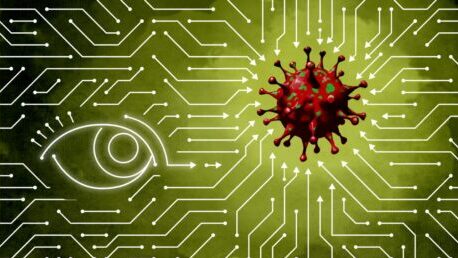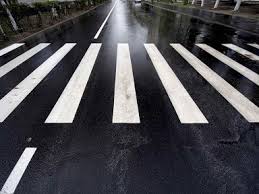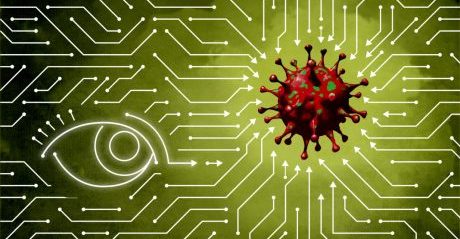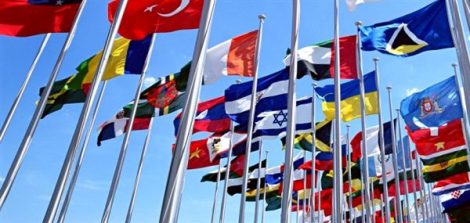
An up-to-date list of sites and schedules is available on the City’s website. The public is encouraged to confirm locations and schedule by calling 311 or visiting phila.gov/food before going to a site. This continued effort is a partnership with the community-based sites, as well as Philabundance and Share Food Program.
The City, School District, and partners will continue to operate student meal sites this fall. In addition, Outdoor Meals, senior meals, and meal delivery to people with disabilities will continue through partnerships with Step Up to the Plate, Philadelphia Corporation for Aging and Liberty Resources. The food site partnership was part of the City’s coordinated response to the COVID-19 crisis. Since then, the City’s Community Life Improvement Program (CLIP) and volunteers have packed more than 32,000 boxes of food each week with food contributions by Philabundance and Share Food Program. More than 471,600 boxes have been distributed at food sites alone, not including youth or senior meal sites. This effort was made possible by the City’s partners, staff and volunteers, who are committed to ensuring that every Philadelphian has access to free and healthy foods. Additional resources can also be found at whyhunger.org/find-food and communityresourceconnects.org. Individuals may also call WhyHunger at 1(800) 5-HUNGRY, or text their zip code to 1(800) 548-6479 to find food near them. People who would like to support food access in Philadelphia are encouraged to continue making contributions to Philabundance and Share Food Program, including volunteering their time to distribute food. Go to sharefoodprogram.org, philabundance.org, or serve.volunteermatch.org to learn more. Testing Site Map: A testing site finder at phila.gov/testing helps people find a free COVID-19 test in Philadelphia. Anyone can search for a site by address, click on a map location for specific site information, and filter by day of week and by drive-thru or walk-up. COVID-19 Resources:
The Philadelphia Department of Public Health today announced 84 additional confirmed cases of COVID-19 novel coronavirus in Philadelphia. That brings the number of confirmed cases to 32,432. The Department of Public Health confirmed no additional fatalities in Philadelphia. The number of residents who have succumbed to the virus in Philadelphia remains at 1,717. Of the 1,717 total deaths, 863 (50%) were long-term care facility residents. Note: Today’s count of deaths in long-term care facilities is one less than reported yesterday due to data cleaning. Current and cumulative totals of both symptomatic and asymptomatic positive cases in Philadelphia prisons are now posted on the testing and data page of the City’s COVID-19 website. Food Sites Update: The City, Philabundance and Share Food Program announced today that they will continue to distribute free, healthy food to families throughout the fall, with some changes to locations and schedule:
An up-to-date list of sites and schedules is available on the City’s website. The public is encouraged to confirm locations and schedule by calling 311 or visiting phila.gov/food before going to a site. This continued effort is a partnership with the community-based sites, as well as Philabundance and Share Food Program.
The City, School District, and partners will continue to operate student meal sites this fall. In addition, Outdoor Meals, senior meals, and meal delivery to people with disabilities will continue through partnerships with Step Up to the Plate, Philadelphia Corporation for Aging and Liberty Resources. The food site partnership was part of the City’s coordinated response to the COVID-19 crisis. Since then, the City’s Community Life Improvement Program (CLIP) and volunteers have packed more than 32,000 boxes of food each week with food contributions by Philabundance and Share Food Program. More than 471,600 boxes have been distributed at food sites alone, not including youth or senior meal sites. This effort was made possible by the City’s partners, staff and volunteers, who are committed to ensuring that every Philadelphian has access to free and healthy foods. Additional resources can also be found at whyhunger.org/find-food and communityresourceconnects.org. Individuals may also call WhyHunger at 1(800) 5-HUNGRY, or text their zip code to 1(800) 548-6479 to find food near them. People who would like to support food access in Philadelphia are encouraged to continue making contributions to Philabundance and Share Food Program, including volunteering their time to distribute food. Go to sharefoodprogram.org, philabundance.org, or serve.volunteermatch.org to learn more. Testing Site Map: A testing site finder at phila.gov/testing helps people find a free COVID-19 test in Philadelphia. Anyone can search for a site by address, click on a map location for specific site information, and filter by day of week and by drive-thru or walk-up. COVID-19 Resources:
By Noelani Kirschner When, in the 1990s, Peter Tsai invented the material that made the N95 mask possible, he never expected it would save millions of lives decades later. Now, during the COVID-19 pandemic, the mask — which can trap viruses and bacteria — is used by first responders, medical professionals and at-risk people around the world. “My invention is just an ordinary invention in an extraordinary time,” Tsai said. The electrocharged fiber that makes up the N95 mask took more than a decade for Tsai to develop. After coming to the U.S. from Taiwan in 1981 to study at Kansas State University, Tsai went on to earn a doctorate in material science after completing over 500 credits in a variety of subjects, such as engineering and the hard sciences, which “is equivalent to six Ph.D.s,” he said. Tsai followed his professor from Kansas State University to the University of Tennessee, Knoxville, where he eventually became a professor himself. There, Tsai led a research team to develop a material that filtered air by attracting particles through electrostatically charged fibers. In 1992, the team developed a material consisting of both positive and negative charges, attracting particles — such as dust, bacteria and viruses — and trapping 95 percent of them by polarization before they can pass through the mask. “The original intent was to use these charged fibers for air filters, such as home filters,” Tsai said. That discovery soon led to the creation of the N95 mask, since it, too, is a type of air filter — one designed for single, individual use. The N95 mask was originally designed for construction workers in dusty environments, where it could block microparticles. The U.S. Centers for Disease Control figured out in 1996 that the N95 mask could also attract and block viruses, according to Tsai. When Tsai’s material was combined with manufacturer 3M’s medical-mask design, the result was the mask that has been used by medical professionals around the world ever since. Tsai retired from teaching in 2018. But when the COVID-19 pandemic struck, he came out of retirement to work 18- to 20-hour days trying to figure out how to most efficiently sanitize N95 masks for reuse when an increased demand meant masks were in short supply. While boiling, alcohol and baking all reduced the effectiveness of the mask, Tsai found that baking the masks in the oven at 71 degrees Celsius works. Tsai’s preferred method is to let the virus die naturally by letting the mask sit for seven days without being touched. If the virus doesn’t have a host for that long, it dies on the surface of the mask. And even if someone doesn’t own an N95 mask, Tsai says, any kind of cotton mask or nose and mouth covering is better than nothing for reducing the spread of COVID-19. “Everyone,” he says, “needs to wear a mask.”


By Noelani Kirschner (Photo - State Dept./D. Thompson) Artificial intelligence (AI) is becoming a powerful tool for tracking and treating COVID-19 in the U.S. and abroad. Several U.S. institutions are developing new AI technology or using preexisting technology to monitor and treat the new coronavirus. HealthMap, an AI application run by Boston Children’s Hospital, was launched in 2006. It was among the first tracking mechanisms to detect the COVID-19 outbreak in China.
“HealthMap data has been used for research studies of infectious disease events,” said Kara Sewalk of Boston Children’s Hospital, “and can even be used by the general public to receive real-time information on disease events in their community” or where they may travel. HealthMap’s algorithm collects online data about infectious-disease events around the world from news organizations and social media in 15 languages. The system then uses machine learning and natural language processing technologies to track outbreaks, Sewalk said. Before the pandemic, researchers at the University of California, San Diego (UCSD) worked for 18 months to create an AI system to detect pneumonia and lung damage in patients. Once COVID-19 cases started to arrive at UCSD-affiliated hospitals, doctors used their technology to help diagnose and track COVID-19 in over 6,000 chest X-rays, according to media reports. A recent study by researchers in the U.S. and China found AI correctly diagnosed COVID-19 in 68 percent of a sample of patients who had normal chest scans and had been classified as negative for COVID-19 by radiologists. This U.S. innovation follows on “$12 billion allocated by agencies and departments across the U.S. government to benefit the global response, including vaccine and therapeutics development, preparedness efforts and humanitarian assistance,” Secretary of State Michael R. Pompeo said in a statement. Efforts to track COVID-19 using AI come as part of broader international efforts to share data and conduct research for a COVID-19 cure.
By Leigh Hartman The U.S., like other nations, has embassies and consulates in those countries with which it has formal diplomatic relations. The embassy is located in or near the host nation’s capital and is usually headed by an ambassador. Embassies assist American citizens abroad, provide visas to visit the United States, and promote business and cultural ties. In larger countries, consulates serve as extensions of the embassy for regions outside the capital. They provide the same services as the embassy and take their direction from the ambassador.
Both embassies and consulates are the sovereign territory of the nation they represent. On July 24, the Chinese government ordered the closing of the U.S. Consulate in Chengdu, China. “We are disappointed by the Chinese Communist Party’s decision,” the State Department said in a statement to the Associated Press. “We will strive to continue our outreach to the people in this important region through our other posts in China.”